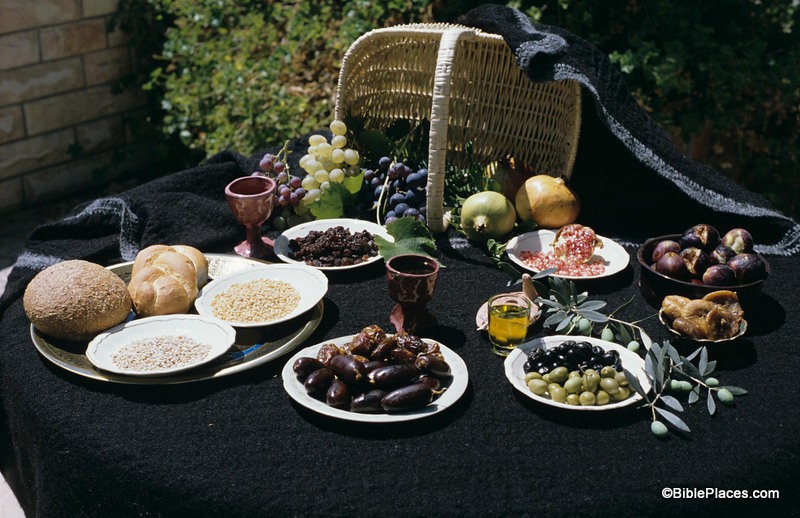(Post by Seth M. Rodriquez)
Look around where you are sitting for things that are the color brown. Then look for things that are red or blue. You will probably be surprised at how many things you can spot that are those colors, and you never really notice how many there are until you specifically look for them.
The same can be said for plants mentioned in the Bible. As you are reading through the scriptures, you probably don’t even notice how many times trees or flowers or wheat or weeds are mentioned. They are just part of the warp and woof of the text. Yet when you stop to count them, it is shocking how often they appear.
Our picture of the week comes from Volume 16 of the revised and expanded edition of the Pictorial Library of Bible Lands, which focuses on “Trees, Plants, and Flowers of the Holy Land.” This is an entirely new volume of the PLBL. A small number of the pictures in this volume were included in the previous version but they were scattered throughout the collection based on their location. This new volume collects these photos together in one place and adds numerous new photos, creating a powerful tool for learning about biblical plant life. Looking over the list of pictures included in the collection (which can be found here) the collection includes photographs of:
- 11 types of fruit trees (such as fig trees, olive trees, & grapevines),
- 16 types of field crops & garden plants (such as wheat),
- 15 types of wild herbs,
- 19 types of forest trees & shrubs,
- 6 types of plants by rivers and marshes,
- 6 types of plants of the wilderness,
- 47 types of thorns and thistles,
- 176 types of flowers of the field,
- 8 types of drugs, spices, incense & perfume.
Numerous photographs in this new volume were taken by Gloria E. M. Suess, who was a long-term volunteer at the Institute of Holy Land Studies in Jerusalem and an avid photographer of biblical plants. Our picture of the week was taken by her and is entitled “Seven Species Display.” (Click on the photo for a higher resolution.)
The seven species represented here are the seven types referred to by Moses in Deuteronomy 8:7-10.
For the Lord your God is bringing you into a good land, a land of brooks of water, of fountains and springs, flowing out in the valleys and hills, a land of wheat and barley, of vines and fig trees and pomegranates, a land of olive trees and honey, a land in which you will eat bread without scarcity, in which you will lack nothing, a land whose stones are iron, and out of whose hills you can dig copper. And you shall eat and be full, and you shall bless the Lord your God for the good land he has given you. (Deuteronomy 8:7-10, ESV)
This photo captures all seven varieties of products in one shot. Barley and wheat are at the far left, each represented by its grains and a loaf of bread made from that type of grain. Vines are represented at the top of the photo by three types of grapes, along with a cup of wine and a plate of raisins. Figs are at the far right side of the picture: fresh figs (top) and dried figs (bottom). Pomegranates (two whole and one opened) can be seen at the top of the photo between the grapes and figs. Olives are shown at the lower right side: both green and black olives along with a cup of olive oil, an oil lamp (behind the cup), and a branch from an olive tree.
Lastly, honey is represented by dates at the bottom center of the photo. The juice that was squeezed from fresh dates was known as date honey, and can be seen in the cup just above the plate of fresh and dried dates. Some scholars believe that date honey instead of bee honey makes the most sense in this list of agricultural products.
Once again, a picture is worth a thousand words. Seeing all seven species together on one table whets that appetite and drives home the message in a different way than merely reading the text. Looking at this feast, it is easy to see that this truly was a “good land” that God was giving to the Israelites.
This and other photos of biblical plant life are included in Volume 16 of the Pictorial Library of Bible Lands and can be purchased here. For further thoughts on why Moses may have chosen to mention these seven species, see my blog post on the Wild Olive Shoot blog here.
